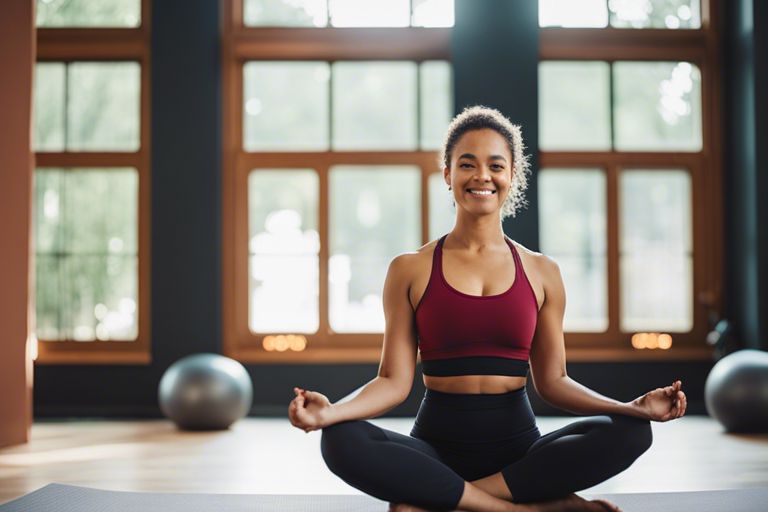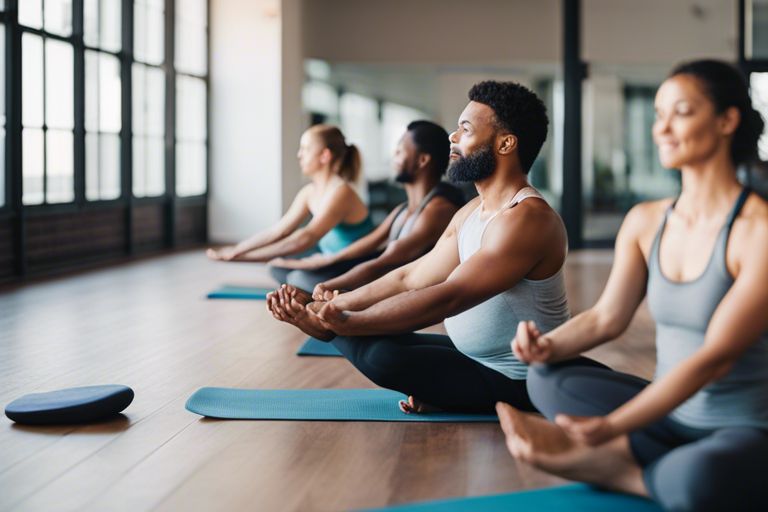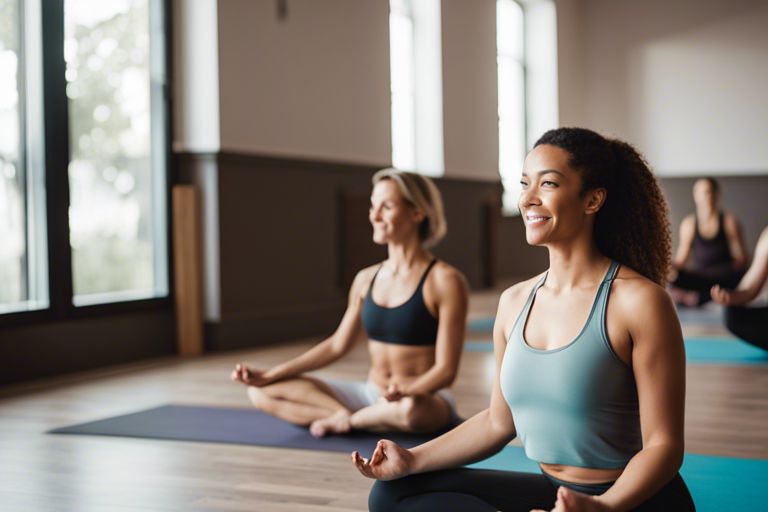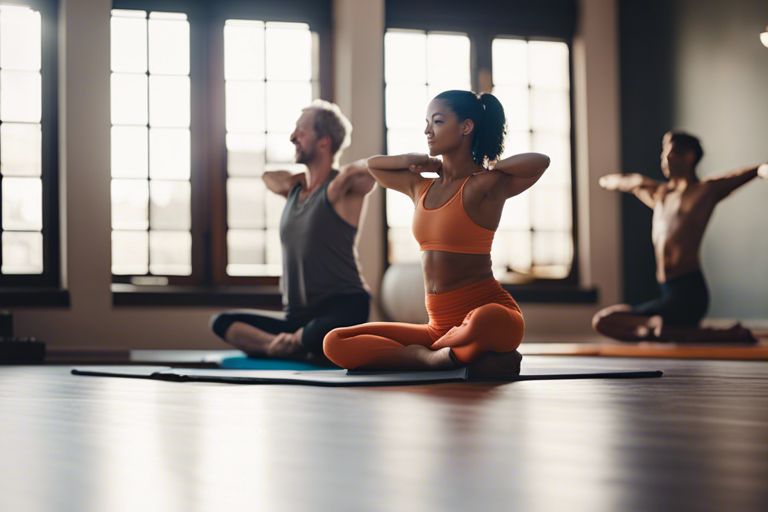Yoga is a fantastic way to improve your flexibility, strength, and mind-body connection, and Slow Flow Yoga is a perfect place to start. This gentle practice focuses on syncing your breath with your movements, helping you enhance your awareness and find a sense of relaxation on the mat. In this guide, we will provide you with imperative tips and tricks to help you navigate your slow flow practice confidently and safely. Whether you are new to yoga or just looking to slow down your practice, these tips will support you along your journey.
Key Takeaways:
- Slow flow yoga is beneficial for beginners as it provides a gentle introduction to the practice, focusing on alignment, breathing, and mindfulness.
- Embrace modifications in slow flow yoga to make poses accessible and comfortable, empowering you to gradually build strength, flexibility, and balance.
- Listen to your body during slow flow yoga and honor your limitations, allowing yourself to progress at your own pace and avoid overexertion.

Types of Slow Flow Yoga
Before stepping into the world of slow flow yoga, it’s important to understand the different types of practices you may encounter. Each type of slow flow yoga has its unique characteristics and benefits, catering to your individual needs. Knowing the distinctions between these types can help you choose the practice that resonates most with you.
| Hatha Yoga | Vinyasa Yoga |
| Yin Yoga |
Hatha Yoga
Some slow flow yoga classes may be rooted in Hatha Yoga, which focuses on the alignment of the body, breath, and mind. In a Hatha practice, you move through gentle and deliberate poses, holding each posture for a few breaths to build strength and flexibility. This type of yoga is great for beginners as it provides a solid foundation for your practice.
Vinyasa Yoga
Flow through a sequence of poses in sync with your breath in a Vinyasa Yoga class. This type of slow flow yoga emphasizes the continuous movement from one pose to the next, creating a dance-like flow on the mat. Vinyasa yoga can help you build heat in the body, increase your stamina, and improve your overall flexibility.
Knowing the connection between your breath and movement is crucial in Vinyasa Yoga, as each inhale and exhale guides your transitions between postures, creating a meditative flow.
Yin Yoga
While other forms of yoga focus on dynamic movement, Yin Yoga targets the deeper connective tissues in the body through passive stretching. Poses in a Yin practice are held for longer periods, typically 3-5 minutes, allowing you to relax and release tension in your muscles and joints.
In Yin Yoga, the practice is more meditative, encouraging you to find stillness in each posture and explore the sensations that arise. This type of yoga is beneficial for improving flexibility, soothing the nervous system, and promoting relaxation.
1. Find a quiet, comfortable space to practice.
2. Start with deep, intentional breathing to center yourself.
3. Focus on smooth, deliberate movements to increase body awareness.
4. Incorporate gentle stretches to improve flexibility and relax muscles.
5. Embrace the slower pace and listen to your body’s needs.
6. End the practice with a short meditation for relaxation.

Getting Started with Slow Flow Yoga
If you’re new to slow flow yoga, it’s crucial to start with the right resources to guide you in this practice. Discover the Best Yoga Practices for Beginners—Start … Slow flow yoga focuses on moving through poses with mindful awareness and controlled breathing, making it a perfect introduction to the world of yoga.
Essential Equipment You’ll Need
Little equipment is required for slow flow yoga, which makes it accessible for beginners. You’ll need a comfortable yoga mat that provides enough cushioning and grip for your practice. Additionally, having a yoga block and strap can be helpful for modifying poses and deepening stretches as you build flexibility and strength.
Creating a Conducive Practice Space
One of the advantages of slow flow yoga is that you can practice it almost anywhere. However, creating a dedicated and calm space in your home can enhance your experience. You may want to include elements like candles, soothing music, or crucial oils to set a relaxing atmosphere. Ensure your space is clutter-free and has enough room for you to stretch comfortably.
Getting started with slow flow yoga is a positive step towards improving your physical and mental well-being. By committing to a regular practice and setting up a welcoming environment, you can fully embrace the benefits of this gentle and introspective form of yoga.

Step-by-Step Guide to Your First Slow Flow Yoga Class
After deciding to try out a slow flow yoga class, it’s natural to feel a mix of excitement and nervousness. To help ease your mind and ensure you have a positive experience, let’s break down what to expect in your first class in a step-by-step guide.
Preparing for Your First Class
Class PreparationWhat to WearComfortable, breathable clothing that allows for easy movement.Yoga MatBring your own or check if the studio provides them.Water BottleStay hydrated throughout the class.
What to Expect During the Class
Little GuideArrive EarlyGet familiar with the studio space and inform the instructor of any injuries or concerns.Breath AwarenessFocus on linking your breath with movement throughout the class.
First, it’s crucial to understand the basic principles of slow flow yoga. This style focuses on gentle, deliberate movements that flow seamlessly from one pose to the next, synced with controlled breathing. The pace is slower than a typical vinyasa class, allowing you to focus on alignment, breath, and mindfulness throughout the practice.
Tips for Modifying Poses
YouUse PropsDon’t hesitate to grab blocks or a strap to support your alignment and make poses more accessible.Listen to Your BodyHonoring your body’s limits is key to a safe and enjoyable practice. Any discomfort or pain is a sign to back off or modify the pose.
Expect the instructor to offer variations and modifications for different poses to accommodate various skill levels and body types. Recall, it’s perfectly okay to stay in a modified version of a pose that feels right for your body. The goal is not perfection but rather to find a comfortable stretch and maintain steady breathing throughout the practice.
Factors to Consider When Practicing Slow Flow Yoga
Unlike traditional yoga practices, slow flow yoga requires you to focus more on the transitions between poses rather than rushing through them. This style of yoga emphasizes mindfulness, breath control, and attention to alignment. To make the most out of your slow flow yoga practice, here are some factors you should consider:
- Breathing Techniques: Pay attention to your breath and strive to sync your movements with it. This can help you cultivate a sense of calmness and presence during your practice.
- Alignment and Posture: Ensure that you maintain proper alignment in each pose to prevent injury and maximize the benefits of the practice.
Thou, remember that slow flow yoga is not about achieving perfection in the poses, but rather about honoring your body and its capabilities.
Breathing Techniques
The key to a successful slow flow yoga practice lies in mastering your breathing techniques. Focus on taking deep, mindful breaths as you move through the poses. Use your breath to guide your movements and find a natural rhythm that suits you. Remember that the breath is your anchor throughout the practice, helping you stay grounded and connected to the present moment.
Alignment and Posture
Slow flow yoga places a strong emphasis on alignment and posture to ensure that you are not only practicing safely but also effectively. Each pose has specific alignment cues that you should pay attention to, such as keeping your spine straight, engaging your core muscles, and aligning your joints properly. By maintaining proper alignment, you can prevent injuries, improve your overall form, and deepen your practice.
Breathing properly and focusing on alignment will help you get the most out of your slow flow yoga practice, allowing you to experience its full benefits and avoid any potential pitfalls.
Listening to Your Body
When practicing slow flow yoga, it is crucial to listen to your body and honor its limits. Your body will communicate what it needs, whether it’s taking a rest in child’s pose, modifying a pose to suit your comfort level, or pushing yourself a little further. By tuning into your body’s signals, you can practice yoga mindfully and prevent injury. Remember that every day is different, and what your body needs can vary from one practice to the next. Start by listening to your body’s cues and responding with kindness and compassion.
Pros and Cons of Slow Flow Yoga
Keep in mind that slow flow yoga, like any other type of yoga practice, comes with its own set of pros and cons. It’s important to consider these factors to determine if slow flow yoga is the right fit for you. Below is a breakdown of the pros and cons of slow flow yoga:
| Pros | Cons |
| Helps improve flexibility and strength | Can be challenging for beginners |
| Encourages mindfulness and relaxation | May not provide a high-intensity workout |
| Allows for deeper stretches and longer holds | Requires patience and focus |
| Reduces stress and anxiety levels | Not ideal for those seeking quick results |
Physical and Mental Benefits
An important benefit of slow flow yoga is that it helps improve your flexibility and strength gradually, allowing you to move deeper into poses over time. This can prevent injuries and improve your overall physical well-being. Additionally, the focus on mindfulness and relaxation in slow flow yoga can help reduce stress and anxiety levels, promoting a sense of calm and well-being in your daily life.
Common Challenges and Drawbacks
Little by little, you may find that slow flow yoga can be challenging, especially if you’re used to fast-paced workouts. It requires patience and focus to hold poses for longer periods and move through sequences at a slower pace. One common challenge you may encounter is the lack of high-intensity cardio workout, which some individuals prefer for quick fitness results.
Cons: While slow flow yoga offers numerous benefits, it may not be suitable for those looking for a vigorous workout or quick physical transformations. Additionally, the slow pace of the practice can sometimes test your patience and persistence, requiring a dedicated mindset to fully experience its benefits.
Summing up
On the whole, incorporating slow flow yoga into your routine can have numerous benefits for both your body and mind. Remember to listen to your body, breathe deeply, and focus on proper alignment throughout your practice. By starting with beginner-friendly poses and gradually building up your practice, you can improve your flexibility, strength, and overall well-being. Don’t be discouraged by any initial challenges you may face; with patience and practice, you will gradually progress and deepen your yoga practice.
FAQ
Q: What is Slow Flow Yoga?
A: Slow Flow Yoga is a style of yoga that involves moving through poses at a slower pace, allowing for a deeper focus on alignment, breath, and mindfulness. It combines the fluidity of Vinyasa with the attention to detail of Hatha yoga.
Q: What are the benefits of practicing Slow Flow Yoga?
A: Practicing Slow Flow Yoga can help improve flexibility, strength, and balance. It also promotes relaxation, reduces stress, and increases body awareness. Slow Flow Yoga can be a great way for beginners to ease into a yoga practice and for experienced yogis to deepen their practice.
Q: How can beginners get started with Slow Flow Yoga?
A: Beginners can start with a slow flow yoga class designed for all levels. It’s important to listen to your body, take modifications when needed, and focus on your breath. Setting an intention for your practice and being patient with yourself as you learn the poses can also be helpful. Remember that yoga is a personal practice, and it’s okay to take breaks and honor your body’s limits.











